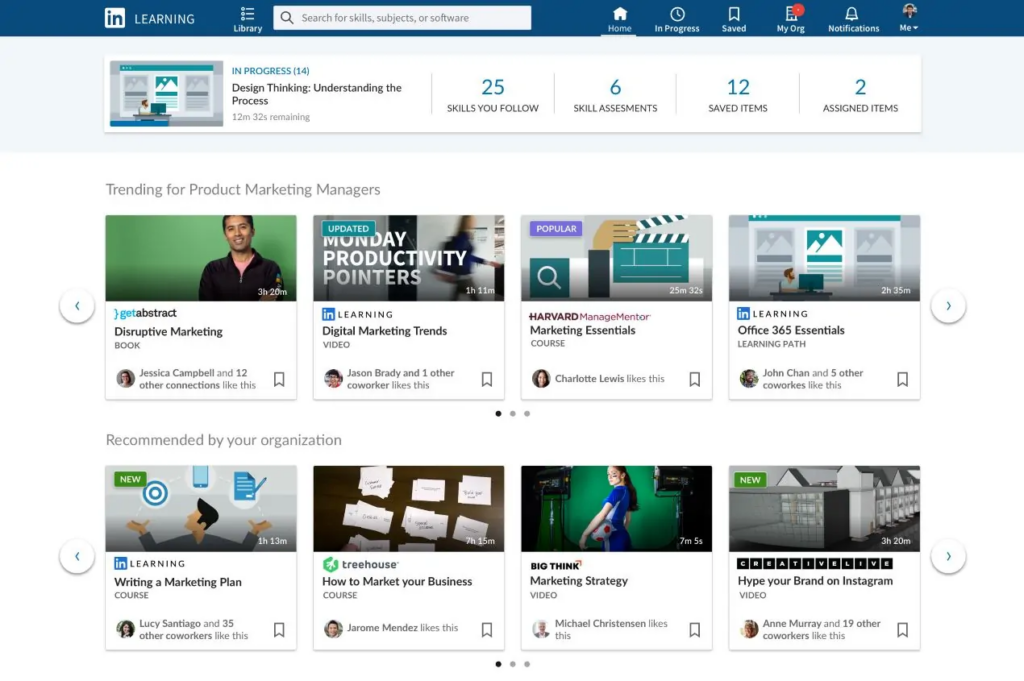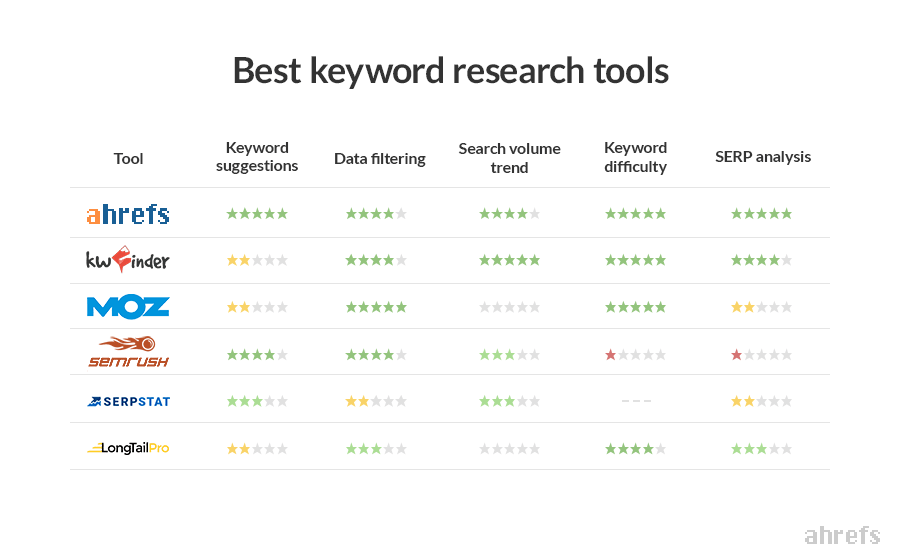Are you struggling to come up with great blog post ideas? As a content marketing expert, I’m aware of the necessity to generate appealing posts that bring people to your site. In this post, I will share some steps on how to start writing a compelling blog post from scratch.
The first step is choosing a potential topic that resonates with your target audience. From there, you can develop main points and key takeaways that will make for an interesting read. Once you have these elements in place, it’s time to start writing! But don’t forget about the final step – editing and refining your work until it’s polished and ready for publication.
If you’re new to blogging or looking for ways to improve existing efforts, this guide has something valuable for everyone! So let’s dive into the steps of writing the perfect blog post!

Step #1: Brainstorm Blog Topics
Brainstorming blog topics can be a daunting task, especially if you’re new to content marketing. But with the right approach and tools, it doesn’t have to be difficult. Start by getting clear on your target audience and what they want to learn about.
You can use Google Trends or other online tools to get an idea of popular topics in your niche. This will give you some ideas for potential blog posts that are likely to resonate with readers.
Another great way to come up with interesting blog post ideas is by looking at what people are already learning through online courses on Udemy, Skillshare, and LinkedIn Learning.
These platforms often feature top-rated courses related to specific topics that could make for great blog posts as well.

You can also look at industry publications or blogs in your field for inspiration – this is a great way of staying up-to-date on the latest trends while generating fresh ideas for content creation too! Plus, you may even find some valuable information that could help inform future pieces of content as well.
Finally, don’t forget about social media when brainstorming blog post topics – take note of any conversations happening around relevant hashtags or keywords related to your brand or niche; these insights could provide plenty of fodder for creating engaging content!
For those who prefer more traditional methods of brainstorming, there’s always the classic “brain dump” technique. Simply jot down all the possible topic ideas that come into your head without worrying about structure or order until later on in the process. You might surprise yourself with how many creative concepts emerge from this exercise alone!
Step #2: Keyword Research to Refine the Topic
Keyword research is an essential part of content marketing. It helps you to refine your topics and create more targeted blog posts that will draw in the right readers. Without it, you could be wasting time writing about something no one wants to read.
One way to do this is by using keyword research tools like Answer the Public, Ubersuggest, and Google Keyword Planner. These tools allow you to enter a seed keyword (the main topic of your post) and get back hundreds of related terms that people are searching for online. By analyzing these results, you can identify which keywords would make good targets for optimizing your post around them – allowing more people who search for those terms to find them easily through search engines like Google or Bing.

You should also look at long-tail keywords when doing keyword research as they tend to have less competition but still bring in relevant traffic from searches with specific intent behind them – such as “how do I optimize my blog posts?” rather than just “blogging tips” which could mean anything from SEO advice up to how-to guides on starting a blog itself!
Once you have identified some target keywords, it’s important not only to include them throughout the body of the text but also to use them strategically within titles and headings so that they stand out clearly when someone scans through their search engine results page (SERP). Doing this allows readers quickly see why they should click on your article over others competing against yours – giving them the incentive to pick yours instead! Additionally, use synonyms or variations of the same keyword throughout the text so that it doesn’t sound repetitive or unnatural.
- Localizing Keywords
Finally, don’t forget about localizing keywords if applicable – especially if there’s any chance that someone outside of English-speaking countries might come across your content too! For example: Replacing “blog” with “website” or “web log” depending on where most visitors originate from can help increase visibility significantly due to its relevance towards different cultures & languages worldwide!
Step #3: Understand Your Target Audience
Knowing who your target audience is, what they need, and what interests them is key when creating content that resonates with them.
To do this, you can start by researching their demographics such as age range, gender, location, etc., then use surveys or polls to get a better understanding of their preferences and needs. Additionally, look at the type of content they already engage with online—what topics are they interested in? What kind of language do they use? Answering these questions will help you create content tailored specifically for your target audience.
Take a look at how your competitors are engaging with their audiences on social media platforms like Facebook or Twitter—are there any strategies that seem to be working well for them? If so, consider using similar tactics yourself but make sure to put your spin on it so that it stands out from the competition! You can also analyze which types of posts have been most successful for them in terms of engagement (like, share, comments). This will give you an idea of what kind of content resonates best with their audiences so you can replicate it to reach yours too!

Once you know who your target audience is and what type of content appeals to them most effectively, take advantage of social media platforms like Instagram or YouTube where people tend to spend more time than other sites like Facebook or Twitter. Posting regularly on these channels will allow you to build relationships with potential customers while also providing valuable information about products and services related to your brand niche. Also, consider hosting live Q&A sessions where users can ask questions directly—this way not only will people feel heard but also connected which could lead to future sales opportunities down the line!
Step #4: Content Outline
A content outline is an essential tool for any writer looking to create a blog post. It should include a title, main points, sub-points, and supporting details. A content outline helps the writer organize their thoughts and plan out what they want to say before they start writing. Crafting a content outline before writing a blog post is essential for making sure the piece looks professional and can be easily comprehended by those who encounter it online.
The title of your blog post should be clear and concise so that readers know what the post is about at first glance. Make sure it’s catchy enough to draw people in but also accurately reflects the topic you are discussing.
Once you have your title set, it’s time to move on to the main points of your blog post. These are usually three or four key ideas that will form the basis of your article and provide structure for everything else you write about within it. Think of them as signposts along a journey – each one pointing towards something new that readers can explore further down the line if they choose to do so.
From there, you can begin breaking down each point into smaller sub-points which will give more detail on each idea presented in your main points section. This allows readers to gain a better understanding of what exactly you are talking about without having too much information all at once – like “biting off more than one can chew”!
Finally, add some supporting details such as quotes from experts or anecdotes from personal experience which help bring life into whatever subject matter you are discussing in your blog post while also providing evidence for any claims made throughout its course. This makes it easier for readers to trust what they read and feel connected with whatever message is being conveyed by its author(s).

Step #5: Write Engaging Content
Before you start writing, it’s important to understand who your audience is and what they are looking for in a blog post. Once you have an idea of who your readers are, the next step is brainstorming ideas for content topics that will interest them. If you need inspiration, try searching online for other blogs in similar niches as yours – this can give you some great ideas on what type of content might work well with your blog posts!
Adding visuals such as images and videos can really bring life into any blog post – not only does it make the text easier on the eyes but it also helps keep readers engaged by providing visual cues throughout the article which makes reading much more enjoyable overall! When using visuals in blog posts always make sure they are relevant and appropriate so as not to distract from the main message being conveyed within each piece of content itself. Additionally, consider adding infographics if possible since these tend to be very popular among readers due to their easy-to-understand format which allows users quickly grasp key points without having to read through long blocks of text first!

Make sure your blog has shareability built into its design – this means including social media buttons at strategic locations throughout each article so people can easily spread its content across various platforms (e.g. Twitter, Facebook, LinkedIn, etc).
Additionally, try adding clickable links within each piece that link out directly back towards other pieces published on either the same website or external sources – this encourages further exploration amongst visitors thus increasing overall engagement levels significantly over time!
Step #6: Adding CTAs
When it comes to content marketing, adding calls-to-action (CTAs) is essential for driving conversions and engagement. CTAs are the key to getting readers to take action on your blog post or website page. They can be used in a variety of ways, from prompting readers to sign up for an email list or download a free ebook, to encouraging them to purchase a product or service.

The most effective CTAs are those that stand out from the rest of the text and draw attention with strong visuals and compelling language. Use bold fonts, bright colors, and eye-catching graphics such as arrows or buttons that direct users where you want them to go.
Additionally, use actionable words like “Download” or “Sign Up Now” so that readers know exactly what they need to do next. You want every click to count towards achieving whatever goal you set out when creating your content piece – whether it’s increasing sales leads or building brand awareness – so ensure each CTA takes users exactly where you want them to go when clicked upon!
It’s also important not to overwhelm your reader with too many CTAs at once – this can be confusing and distracting. Instead, focus on one primary CTA per page post and then add secondary ones if necessary – but make sure they don’t compete with each other for attention! For example: If you’re promoting an ebook download offer at the end of your blog post, don’t include another CTA asking people to subscribe before they’ve had time to process the first one properly!
Finally, make sure all of your CTAs link directly back into relevant pages on your website so visitors have somewhere specific they can go after clicking through – otherwise, there’s no point in having them there in the first place!
Step #7: Optimizing for SEO
Search engine optimization (SEO) is an important part of any content marketing strategy. After you have written a blog post, there are several steps you can take to optimize it for SEO and ensure that your content reaches the right audience.
Including internal links within your blog post can also be beneficial from an SEO perspective as well as helping readers navigate around your website more easily. Linking to other posts on similar topics helps establish relevance between them and signals to Google that this page should rank higher in its results pages because it contains quality information about a specific topic area.
Another way to boost SEO rankings is by using external links which point back to authoritative sources such as industry experts or research papers related to the subject matter discussed in your blog post. Not only does this provide additional value for readers but also shows Google that you are providing accurate information backed up with reliable sources which increases trustworthiness and therefore improves ranking potential too!
Finally, don’t forget about meta descriptions! These short summaries appear below titles on SERPs (search engine result pages) so make sure yours accurately reflects what readers can expect from clicking through – otherwise they may not bother at all!
Step #8: Editing and Publishing Blog Post
Editing and publishing blog posts are the final steps in writing a successful post. It’s important to take your time with this part of the process, as it can make or break your content.
First, you need to proofread for spelling and grammar errors. Even if you have an editor on staff, it is best practice to do a quick read-through yourself before sending off the post for review. This will help catch any typos that may have been missed during editing.
Next, you should check for accuracy and consistency throughout the piece. Make sure all facts are correct and that there are no discrepancies between sources cited within the article.
Also, ensure that formatting remains consistent from start to finish; nothing looks worse than an article with inconsistent fonts or spacing!
Once everything has been checked over thoroughly, it’s time to publish! Depending on where you plan on posting your content (blog site vs. social media), there may be additional steps involved here such as creating graphics or scheduling out when where how often you want your post shared online. But once these tasks are complete, hit “publish” and let your work go live!
Finally, don’t forget about promoting your post after publication – share it across multiple platforms so readers can find it easily; use hashtags related to its topic; reach out directly to influencers who might be interested in sharing it with their followers; etc. The more people who see what you wrote, the better chance of success for both yourself and your brand!

Bonus Tip: Avoid Writer’s Block
Writer’s block can be a major roadblock for content marketers, entrepreneurs, bloggers, social media managers, and website owners. With careful planning and a few steps, you can easily avoid writer’s block.
Take Time Away From Distractions
To avoid it when drafting your material, start by taking time away from distractions like phones or other electronic devices. Taking a break from the hustle and bustle of everyday life can help one to focus on creative tasks, allowing for original ideas to flow.
Commit At Least 5 Ideas Daily
Once you’ve written down your thoughts in framework form – commit at least five ideas per day towards generating new content – read aloud what you have created before editing again with fresh eyes looking over everything carefully. This allows for an objective perspective of your work which can often highlight any mistakes or areas that could use further improvement.
Regularly Review Editorial Guidelines
Establish and periodically review editorial guidelines to guarantee they are in line with current standards and tailored for the intended audience. Regularly review these guidelines to ensure they are up-to-date with current best practices as well as relevant to the audience being targeted by each piece of content produced.

FAQs Concerning How to Write an Awesome Blog Post in 7 Steps?
Conclusion
Craft a great title, include examples and visuals, edit carefully before publishing, establish editorial guidelines to stay on track when writing posts in the future, prevent writer’s block by allocating time for blogging each week or month, and use social media to promote your efforts – these seven steps will guarantee an amazing blog post. Take the time to research, craft a great headline, include examples and images for visual appeal, edit thoroughly before publishing, set up editorial guidelines to keep yourself on track when writing future posts, and avoid writer’s block by setting aside dedicated time for blogging each week or month and leverage your efforts through social media promotion. Doing all of this will ensure you have a successful blog post every single time.